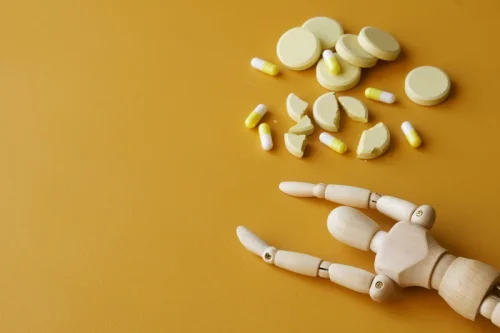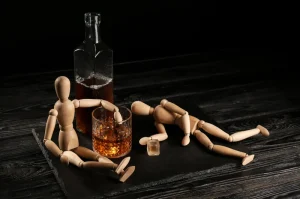What Are The 5 Addiction Stages?

By understanding and recognizing these stages, one can gain the insights and tools needed to break the cycle and embark on the path of lasting recovery. Any drug with a similar mechanism of action that is chemically affecting the central nervous system can lead to tolerance, even if you jump from one to another. For instance, all drugs that lead to a dopamine rush (a euphoric “high” feeling) can lead to addiction, no matter how often you switch from one substance to another. Active drug addiction is a prevalent issue in the U.S., with more than 21 million people aged 12 or older actively addicted to drug use in 2020, according to the National Survey on Drug Use and Health (NSDUH). Resistance is a term often confused with tolerance but specifically relates to the ability of microorganisms or tumor cells to withstand the effects of a drug that would typically be effective against them.
Gambling Addiction Stages: From Casual Betting to Compulsive Behavior

Addiction is characterized by compulsive drug seeking and use, despite the harmful consequences and potential risks to physical and mental health. This stage marks a critical escalation from mere physical dependence to a chronic disorder where the psychological need to use becomes predominant. Dependence is another critical stage of addiction that refers to the body’s adaptation to the presence of a drug, requiring higher doses to achieve the same effects initially experienced.

Some General Problems with Stage Models of Addiction
Understanding each stage is essential to recognizing the signs early and seeking help. Withdrawals from different categories of drugs produce various side effects and require separate approaches. However, many need admission to a hospital or a residential treatment center. As grim and as final as the addiction cycle might sound, with it being a fixed cycle with no chance of reform, there is a window of opportunity that could be utilized to help the person get back on track.
- Addiction’s manifestation is not uniform; it varies significantly among individuals.
- (9) Instead of quitting on their own, it’s important to understand how far substance abuse treatment programs have come.
- Vulnerability to addiction is a complex interplay of various factors that can predispose someone to substance abuse issues.
- This cycle can repeat through relapses, but it can also be broken with the proper support and intervention.
- Depression, anxiety, and mood disorders are common companions to addiction, creating a vicious cycle where individuals may use substances to self-medicate, only to worsen their mental health in the long run.
What Is the Third Stage of Addiction?
Adults mainly enter experimentation either for pleasure or to combat stress. If circumstances align and the individual continues to take the drug, they may soon find themselves in the second stage of addiction. Looking at how often you use substances, how much you take, and what your expectations are when you use them can help you to determine what stage of addiction you are in. Addiction is a difficult disease to overcome, especially on a person’s own.
- This idea can lead to a belief that a person who is struggling with a substance or alcohol addiction may have had one drink or tried an illicit drug one time and immediately became addicted.
- For example, a patient taking pain medication may begin to over-medicate, as they perceive moderate pain as severe pain.
- As defined by Maarefvand, Masoomeh et al. in their 2013 study published in the Iranian Journal of Psychiatry, drug craving is characterized as an intense urge or desire to continue using a substance.
- This multi-faceted approach helps address not just the physical aspects of addiction, but also the psychological triggers that contribute to substance abuse, offering a holistic path to recovery.
In general, experiencing 2-3 of these symptoms is considered a mild substance use disorder. If the person is experiencing 6 or more of the symptoms, it indicates a severe substance use disorder. Starting the healing process with Drug rehabilitation surrender and honesty helps us move forward to the second step, but it’s important to remember that this is a daily step to practice in our ongoing journey of recovery. Instead, we need to practice this step repeatedly to stay on the path of recovery we’ve chosen. Whether you are in the initial use phase or have progressed to addiction, it is never too early or too late to get the help you need with your drug or alcohol addiction.
Relapse as a Learning Opportunity
While many might categorize any drug use as abuse, it is essential to differentiate between experimentation and habitual use choose the correct cycle of addiction. because the motivations and contexts can vary significantly. Signs include mood swings, avoiding responsibilities, secrecy, or physical symptoms like fatigue or withdrawal. If someone seems different or struggles to control their substance use, it’s time to consider help. Getting a professional assessment can clarify the next steps and make recovery more achievable.
How Long Does Trauma Therapy Take? What To Expect
Substance misuse can come in a variety of forms, and there are multiple signs that an individual may be in this stage of addiction development. Families and other loved ones are also victims to the damage caused by addictive substances. It is also the stage when an individual may require substance abuse treatment, such as a dedicated detox program, to stop using substances.
- While a periodic hangover at work or an event is acceptable for Stage 3, at Stage 4 instances like that become a regular occurrence and its effects become noticeable.
- Each step taken towards recovery signifies resilience, courage, and an unwavering belief in the possibility of a brighter future.
- Addiction doesn’t just affect the individual using substances – its impacts ripple outward, touching every aspect of a person’s life and the lives of those around them.
- For example, opioid tolerance can develop, requiring individuals to take increasingly larger doses to alleviate pain.
- Outpatient recovery programs like those offered at CenterPointe Recovery Center provide the necessary support to overcome addiction while allowing individuals to maintain their daily responsibilities.
- This escalation is a dangerous slide into substance abuse, where the substance becomes a central focus of the individual’s life, overshadowing relationships, responsibilities, and personal well-being.
- The more risk factors someone has, the more likely drug use will result in addiction.
- Those in this stage of addiction or their family members may benefit from contacting a dedicated treatment center to explore potential treatment options and support groups.
- Initiation is the first stage of the development of addiction and is when an individual is first introduced to addictive substances.
- Early intervention can prevent long-term damage, and recovery is always possible, no matter how deep into the addiction cycle someone may be.
By now, the brain and body of the user have become so reliant on the substance that the user believes the substance is essential to staying alive. This is, of course, an illusion because even as the user claims using the substance keeps them alive, it is actually slowly killing them. The patterns that emerge could either have real triggers, since not everyone is equipped with ample coping skills to help through a very rough patch. The triggers could vary widely between physical ones, such as those who suffer from chronic pain, who later discover that their painkillers tend to create a euphoric sense in them.

Stages Of Addiction

Regardless of the severity of the addiction, if you or a loved one is suffering from any type of substance abuse or addiction it is important to get the help that you need before it is too late. As you continue to drink more or increase your dosage, your brain will then begin to build a tolerance to that new amount as well. When a person reaches a certain tolerance level, they might turn to even stronger and more dangerous substances in order to keep chasing the effect they are looking for. Rather than seeing relapse as a failure, it can be viewed as part of the recovery journey. It provides an opportunity to identify triggers and build strategies for long-term recovery. In the event of a relapse, there are valuable lessons that can help strengthen a person’s motivation and future attempts at sobriety.






















